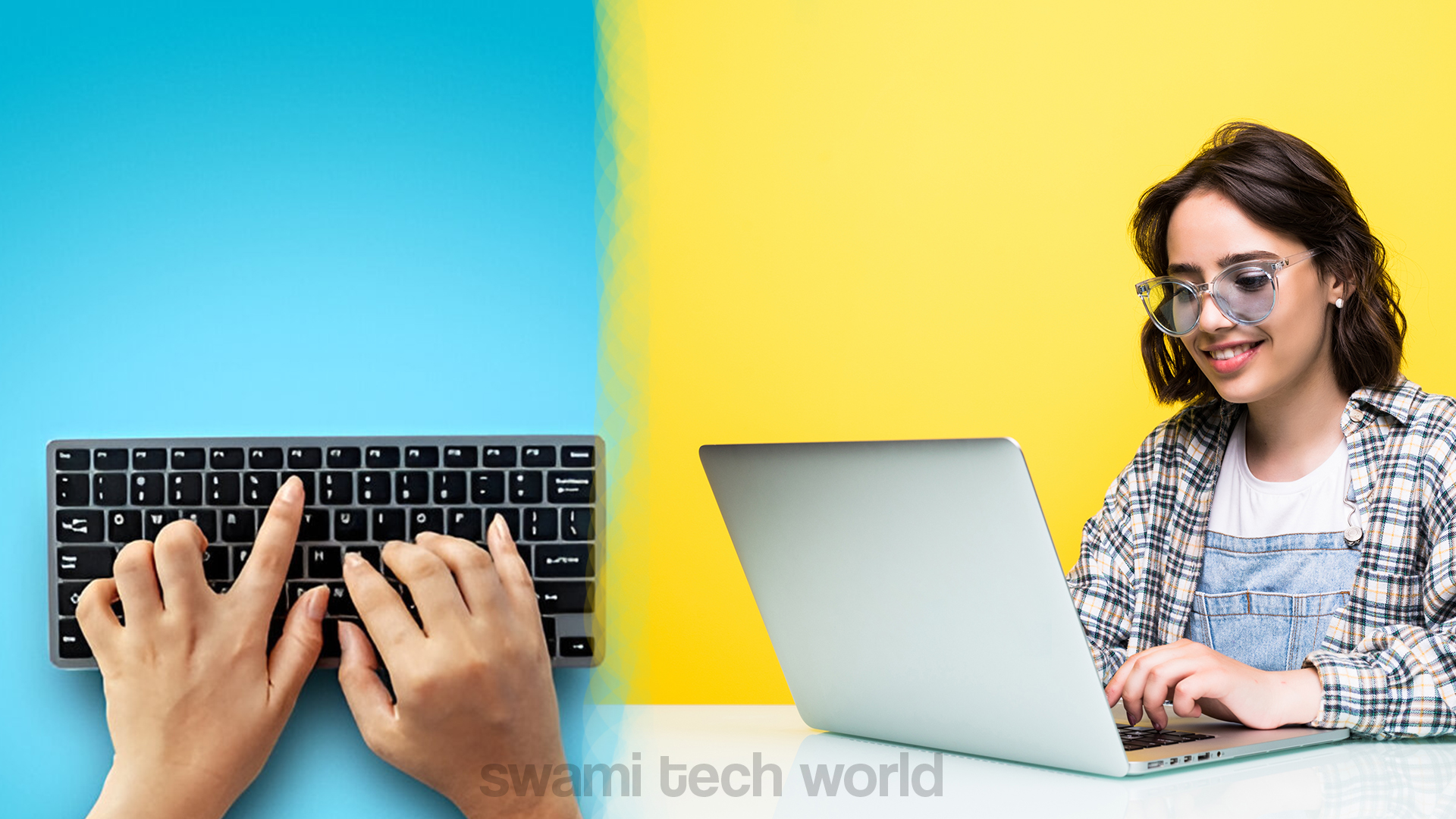Mastering the Art of Touch Typing
Touch typing lets you type on a keyboard without looking at the keys. Your fingers memorize the layout, so you rely on muscle memory instead of your eyes. This skill speeds up your typing and reduces mistakes, so you can put your ideas on the screen without stopping to find the right letter.
Touch typing is useful for everyone. Students use it to finish essays; professionals use it to send emails and create reports; and hobbyist writers use it to keep their ideas flowing. With practice, you type faster and finish tasks sooner. The minutes you save add up to hours each week.
Why Learning Touch Typing Is Important
Quick and precise typing has many advantages. When you don’t have to hunt for keys, your mind can focus on the message. This makes writing easier and more creative, whether you’re working on a research project, replying to a colleague, or entering numbers into a form.
Touch typing also helps your body feel better. Constantly looking from the screen to the keyboard can give you neck and eye strain, or cause soreness in your wrists and hands. Keeping your hands on the keyboard and your eyes on the screen reduces these problems and makes typing more comfortable.
Learn Touch Typing for Free: Top Online Tools and Games
The internet has made learning touch typing easier and totally free. You can find tons of websites that give fun lessons, instant feedback, and keep track of how you’re doing. Whether you’re a complete beginner or you want to get faster, these tools let you practice a little every day on your own schedule.
Launch Your Typing Skills: Recommended Websites
To kick things off, start with TypingClub, Keybr, or Ratatype. Each site offers a step-by-step plan that slowly teaches you every key on the board, from letters to numbers to symbols. You’ll unlock new keys only when you’re ready, and you’ll get a report on your speed and mistakes after every session.
These platforms are easy to use, with clear screens and hints that adjust to how you’re doing. They’re perfect for learners young and old.
Turn Practice Into Play with Typing Games
Practicing typing can be a total snooze, but typing games switch things up and make it feel like play. Websites like TypeRacer and NitroType let you hop into fast-paced typing races against friends or random players. You’ll type fast and accurate while a timer counts down, forcing your fingers to remember the keys without thinking. That’s how you build muscle memory and boost your score all at once.
The mix of learning and fun keeps you coming back. When your daily practice feels more like a game, you’ll want to jump into it instead of dreading it.
Effective Practice Tips to Improve Your Typing Speed
Want to get great at touch typing? Make practice a habit. Set aside 15 to 20 minutes every day for focused typing drills. You can start at a comfortable pace; the key is to lock in the correct finger movements. Over time, you’ll feel more confident and your speed will climb. Remember, it’s a marathon, not a sprint—taking your time and avoiding errors is more important than typing fast and messing up.

Train Yourself to Type Blindly
If you’re just starting out, the most annoying hurdle is the urge to peek at the keys. At first, it’ll seem awkward, but there are easy tricks to break the habit. Try sliding a soft towel over your hands or using a blank keyboard protector. Either way, you’ll stop looking and start thinking. Soon, your fingers will remember the right spots without your eyes ever needing to check. Keep at it every day, and soon you’ll feel like you were always a touch-typist.
Track Your Steps and Keep the Fire Going
Typing sites and apps usually show your speed and accuracy right after each practice. Use those numbers to chase tiny, realistic targets—maybe bump your speed up by 5 WPM, or nail 95% accuracy by the end of the week. When you hit those tiny goals, stop and cheer for yourself. A quick clap or a smile is enough. Watching those scores climb week after week is like seeing a garden bloom—proof that every tiny effort you made is adding up.
Avoiding Early Pitfalls: Focus on Accuracy First
It’s easy for newcomers to get fixated on how fast they can hit the keys. While typing quickly feels great, rushing ahead of good technique usually means mistakes pile up, and bad habits set in deeply. Instead, take the time to learn where each finger should go and keep your movements steady. Speed isn’t the goal for now. Strengthening your muscle memory through steady practice will bump up your words per minute naturally and keep your typing clean.
Posture Matters: How to Type Comfortably and Safely
Your typing position isn’t just about looking good at the keyboard; it’s about protecting your body for the long run. Sit up straight with your lower back supported and your feet planted flat on the ground. Let your wrists float slightly above the keys instead of resting on the tabletop, and arch your fingers naturally over the home row—ASDF on the left, JKL; on the right. Keep your monitor at eye level, so your neck stays straight. When you stick to these simple rules, you can type for longer stretches with less tiredness, your accuracy goes up, and the chances of getting a strain injury drop way down.
Adapting Across Different Devices
Most of us start typing on a regular laptop or desktop keyboard, but trying out different devices is a smart move. Each keyboard has its own personality—like a mechanical one that clicks with every key, a flat tablet keyboard you carry in a bag, or a small netbook with keys closer together. When you use each of these, you train your hands and brain to switch gears easily. That makes typing on any device less of a surprise and more of a second nature, which is a big boost for any typist.
Developing Muscle Memory Through Repetition
Touch typing relies almost entirely on muscle memory. After enough practice, your fingers will move without you having to think about it. The keys will feel right under your fingers, and you will be able to type a sentence while your mind is already on the next one.
Stick to a regular routine. Just 10–20 minutes a day is enough to feel a difference in a couple of weeks. Each session reinforces the same key movements, and the more you repeat them, the more your hands will “remember” the keyboard. Soon you’ll be able to type quickly and accurately, without stealing glances down at the keys.
Get Free Typing Certificates That Shine
Typing.com and other websites let you take typing tests and print free certificates whenever you want. These tests help you see how fast you’re getting and let you set goals you can really see. If you’re a student shooting for a scholarship or a job hunter polishing a resume, a typing certificate shows you care about mastering digital skills that matter.
Boost Your Keyboard Power
Once you can touch type without looking, go a step further and learn extra skills. Keyboard shortcuts will save you time. Practice typing code if you’re into programming. Get fast at using the number pad if you do a lot of data entry. These extras make you quicker and sharper, and they really show in busy digital workplaces.
Download App
Make Typing Easy for Years to Come
Touch typing is more than a cool trick; it’s a skill that sticks. It helps you type faster, more accurately, and without strain. Tons of free tools, games, and lessons are out there to help you start. Spend just a few minutes each day, and soon typing will feel as natural as walking. What once slowed you down will turn into a smooth, easy part of your routine.
Final Thoughts
Mastering the art of touch typing is one of the smartest digital skills you can develop. It saves time, boosts productivity, and makes computer use more comfortable and efficient. Whether you’re a student, professional, or casual user, improving your typing speed and accuracy will benefit you for life. With so many free tools, games, and resources available online, there’s no better time to start. Practice daily, be patient, and watch your skills grow—one keystroke at a time.

Hii
Nagu